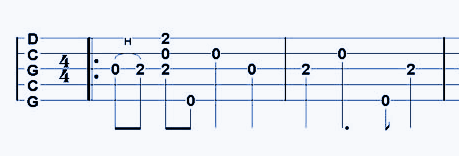
So you will either want to place it at your top string or bottom string, whichever one isn't being used at the moment. The triangle will not show up when you print it's just there in the program as a marker. You can copy/paste the triangle marker everywhere else you want that chord name to be in the tune. Then repeat with each chord name you've created. These inserted text pieces do not affect the actual chords you've created for guitar, banjo, or other instruments. This can, in most cases, be corrected easily.So it's possible to accidentally insert the wrong chord name. Clicking on the lowest string of the secondary barré will cause it to be displayed as three, separate, filled circles.ĭue to these automatic functions, barrés may suddenly appear where you don't want them or, conversely, you may have trouble getting a barré to be displayed where you want one. For instance, the upper notes of a third fret C chord may be played with either three fingers or with a three string (2nd, 3rd and 4th) interior barré at the 5th fret played with the ring or little finger (assumed by TablEdit). Under certain conditions, the chord editor will insert a secondary barré automatically. Although it's highly unlikely that five strings in succession would be fretted with individual fingers, such a barré can be broken up by right-clicking on the lowest string. The chord editor automatically inserts a grand barré when more than four, successive black circles are placed at a given fret. If you wish, you can turn this option off by deselecting the button to the right of the Chord Name field. This is due to the automatic chord recognition option mentioned above. Note: You may notice that the chord name changes as you enter the circles. This will toggle the display between the "O" and "X".Ī variation on the same technique also allows you to create Merle Travis style custom chords where the left hand thumb frets two bass strings in a partial barré. To indicate an open ( O) or unplayed ( X) string, left click above the fretboard display. This works especially well when sight reading unfamiliar passages. As an alternative you could show the C major chord with filled circles and indicate the picked D by an open circle.

Showing both a C major and a C major added 9 chord diagram may clutter the display and make sight reading more difficult. Finger pickers will want to use them to show the alternate notes played out of the basic chord position.įor example you may play the 3rd fret, 2nd string D while playing out of a standard C major chord. Open circles are generally used to show supplementary notes not usually included in a given chord. Use the right mouse button to add and remove open circles to the custom Chord Diagram. For example, although you may not actually play the 1st fret, 2nd string C in a standard C major chord you may still want to show it because you do, in fact, fret the entire chord. Fingerpickers may want to use them to show the chord position they're playing out of even if they don't actually play all the notes in the chord. Filled circles are generally used to show the basic fretting of a chord. Use the left mouse button to add or remove filled circles to the custom Chord Diagram. Exiting using cancels any editing you may have done.Īdding filled and open circles to diagrams Quitting the diagram editor using adds the diagram to the diagrams already in the Chord Manager list and you'll be able to retrieve it later. The number of the fret currently at the top of the diagram is displayed to its left. The " First Fret" field at the top right allows you to move along the neck of the instrument. Open strings are represented by an " O" at their upper end and unplayed strings by an " X". The horizontal lines represent the frets of the instrument.

The item " Auto Chord Diagrams", in > Module and are displayed with the lowest pitched string on the left and the highest on the right.
Tabledit left handed chords how to#
Before we get into the discussion of how to use the Custom Chord Editor, there is one point which must be made.


 0 kommentar(er)
0 kommentar(er)
